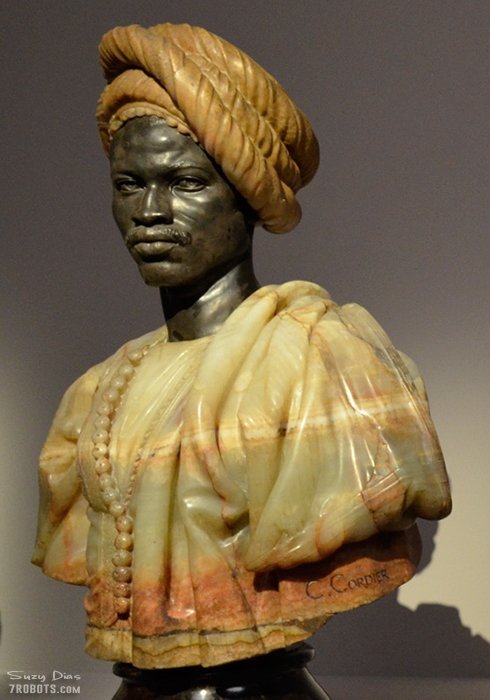Cordier’s sculptures challenged the status quo with the universality of beauty
Charles Henri Joseph Cordier (19 October 1827 – 30 May 1905) was an exceptional French sculptor. I first saw his work in Paris at the Musée d’Orsay and fell in love. Why? His skill and obvious passion for his sculptures makes them seem alive. He captured the strength and beauty of all of his models, regardless of their ethnicity or gender. At a time when anything not European was deemed inferior, even in beauty, his beauty challenged the status quo. Cordier made a conscious decision to oppose to the largely Eurocentric view of the world. His works all spoke to “the idea of the universality of beauty.”
Addressing the French Society of Anthropology in 1862, Cordier stated:
“Beauty does not belong to a single, privileged race, I have promoted throughout the world of art the idea that beauty is everywhere. Every race has its own beauty, which differs from that of others. The most beautiful black person is not the one who looks most like us.”
(“Le beau n’est pas propre à une race privilégiée, j’ai émis dans le monde artistique l’idée de l’ubiquité du beau. Toute race a sa beauté qui diffère de celle des autres races. Le plus beau nègre n’est pas celui qui nous ressemble le plus.”) [read more…]
In his unpublished memoirs Cordier cites the law of 1848 that abolished slavery in France and its colonies, writing:
“My art incorporated the reality of a whole new subject, the revolt against slavery and the birth of anthropology.” In pioneering ethnography as a subject for sculpture in the nineteenth century, Cordier aimed to illustrate what he described as “the idea of the universality of beauty.” [read more…]
The Black Model / Le Modèle Noir Exhibition in Paris
Miguel and I went to see the Black Models : From Géricault to Matisse exhibition at the Musée d’Orsay in Paris, running from 26 March – 21 July 2019. Our expectations were high and were not disappointed. For more information and photos click here.
Black is Beautiful
African Venus (1851)
“Cordier submitted a plaster cast of the bust of an African visitor to Paris to the Salon of 1848, and two years later he again entered it as a bronze (Walters 54.2664). A young African woman served as the model for this companion piece in 1851. Regarded in the 19th century as powerful expressions of nobility and dignity, these sculptures proved to be highly popular: casts were acquired by the Museum of Natural History in Paris and also by Queen Victoria. The Walters’ pair were cast by the Paris foundry Eck and Durand in 1852.” [read more…]
Homme du Sudan (c. 1856 to 1857)
“In 1847, Charles Cordier was struck by the beauty of an African model, a former slave, and made his portrait. He then decided to devote his career as a sculptor to representing the diversity of human physiognomy. He brought a large number of busts back from his trip to Algeria in 1856. This portrait was shown at the 1857 Salon as Negro from the Sudan. The Salon was an exhibition held first biennially then annually, where artists presented their latest works to the public.” [read more…]
Capresse des colonies (1861)
Sculpted from Algerian marble and adorned with bronze and onyx, using polychromy. The sculpture was created after the 1848 emancipation of slaves in the French Empire, which greatly inspired Cordier.
Aimez Vous les un-les autres (1867)
Love One Another celebrates friendship between all cultures and social statuses.
Herbert Ward and Jean-Baptiste Carpeaux
My next post will include photos of two more equally stunning sculptures, focusing on multicultural and black beauty. Ward and Carpeaux also challenged the status quo and showed that beauty is universal.
Related Posts
• The Black Model / Le modèle noir Exhibition in Paris
• Alexandre Dumas and Le Trois Dumas: Three Generations of Greatness








